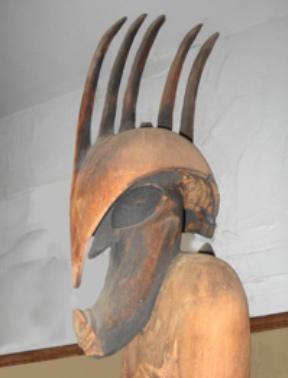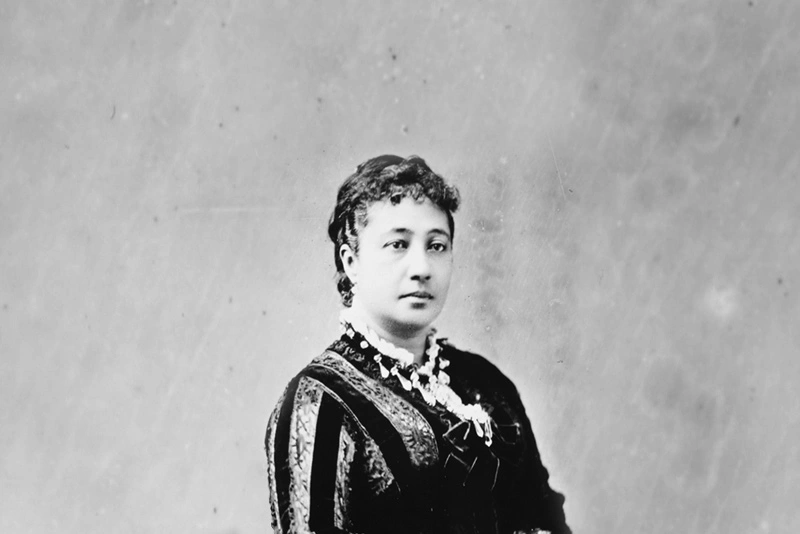Punaluʻu Moʻolelo

Statue of Kamapuaʻa from the Bailey House Museum, Maui
Statue of Kamapuaʻa from the Bailey House Museum, Maui
Punaluʻu is traditionally noted in oral histories and written records as a place with an abundance of resources both mauka and makai. The ahupuaʻa is endowed with a plentiful water supply flowing from Punaluʻu Stream. Native plants in the upland forests included koa, olonā, hau, ʻōhiʻa lehua, and ʻōhiʻa ʻai. Punaluʻu is featured prominently in several legendary Hawaiian mo‘olelo (stories).
The earliest written descriptions about land tenure in Punalu‘u connect it directly to the lineage of Kamehameha the Great. After Kamehameha I conquered O‘ahu in the decisive 1804 Battle of Nu‘uanu, he gave the ahupua‘a of Punalu‘u to his younger (and only full) brother Keli‘imaika‘i.
Kekuaokalani was the son of Keli‘imaika‘i. He was also Kamehameha I’s favorite nephew. Kekuaokalani was raised in Punalu‘u Valley, and reared in the ancient ways by the kahu (priest) Kahonu. Kekuaokalani’s traditional upbringing in Punaluʻu would eventually play a significant role in a legendary battle that changed the course of Hawaiian history:
The Battle of Kuamoʻo December 1819
The ancient kapu system under which Kekuaokalani was raised was based in part on a dualistic conception of the universe, which separated the things that were believed to be superior (the sacred, mana, male, light, occult knowledge and life) from those considered inferior (the common and profane, the physical, passive, female, darkness, ignorance and death). This system prescribed the interactions between the classes, between the people and their gods, between the people and nature and also between the sexes. Most notably, it forbade men and women from eating together and prohibited women from eating most of the foods offered as ritual sacrifices, including pork, fowl, coconuts, bananas, turtle, shark meat and certain kinds of fruits and fish.
Prior to his death in May 1819, Kamehameha I entrusted Kekuaokalani to protect the statue of Kūkā‘ilimoku, the war god that the ali‘i honored throughout his rise to power, and a symbol of the ancient ways.
After Kamehameha I died, the throne was occupied by his son Liholiho. Queen Ka‘ahumanu, who ruled as co-regent with Liholiho, urged the new king to abolish the traditional kapu system. After months of soul-searching, Liholiho made his decision, and in November of 1819, he hosted a feast for chiefs and foreigners where tables were set in the European fashion separating the men from the women. Liholiho momentously sat at the women’s table and ate with them, signaling the end of the ancient kapu system.
This revolutionary change was not easily accepted by some. Kekuaokalani, the defender of the ancient gods who was reared in the old ways via his upbringing in Punaluʻu, fought to preserve the kapu system. He led an armed rebellion to protect the traditions still honored by many of the common people. This fight between old ways and new culminated in December, 1819 with the Battle of Kuamo‘o, in the North Kona District of Hawai‘i Island. Liholiho’s army proved victorious and Kekuaokalani died on the battlefield. The momentous change in the Hawaiian belief system would be further cemented shortly thereafter, in March of 1820, with the arrival of the first Christian Missionaries to Hawai‘i.
Kamapuaʻa
Another legend involves Kamapuaʻa, a feared half-man/half-pig demi-god born in the Kaluanui ahupua‘a just north of Punalu‘u. The home of Kamapuaʻa was near Kaliuwaʻa (known today as "Sacred Falls") in Kaluanui. Kamapuaʻa was notorious for stealing chickens from Olopana, the King of Oʻahu, who had lands in Punaluʻu, Kapaka and Kahana. When Olopana realized that Kamapuaʻa was stealing his chickens, he sent 800 men from Kahana to Kaluanui to capture Kamapuaʻa. The men carried Kamapuaʻa bound to a pole, but he managed to escape. Olopana then ordered all of the men on the entire island to capture the pig god. The king’s men cornered Kamapuaʻa at his home in Kaliuwaʻa, but Kamapuaʻa managed to climb the steep cliff at Kaliuwaʻa and escaped to Waiʻānae.
Kanaloa
Kanaloa is the Hawaiian akua of the ocean. One moʻolelo connecting Kanaloa to Punaluʻu tells of a visit he made to Kahana Valley, which is adjacent to Punaluʻu. Kanaloa was evidently of unusual proportions, as with one foot placed on Puʻu o Mahie, he stepped with the other foot to Punalu'u Point. Then, over the ridge, he saw two men planting taro up in Punaluʻu Valley. He kneeled on the Kahana side of the ridge to get a better look at them. (His knee prints can still be seen in the permanent divots he left on the ridge overlooking Punaluʻu Valley.) Kanaloa watched the two men work. It annoyed him that they planted their taro in uneven rows, so he said to the men, "You are planting your taro crooked." The men heard his voice but could not see him, and after a bit more teasing Kanaloa grew tired and went to Kukaʻiole pool deep in Punaluʻu Valley to drink of the refreshing waters. Near the pool grew the 'awa plant, which the rats were fond of chewing. This pool was named after the ʻiole (rats) that would fall into the water after becoming giddy and dizzy from eating the ʻawa plant that grew in the area.













